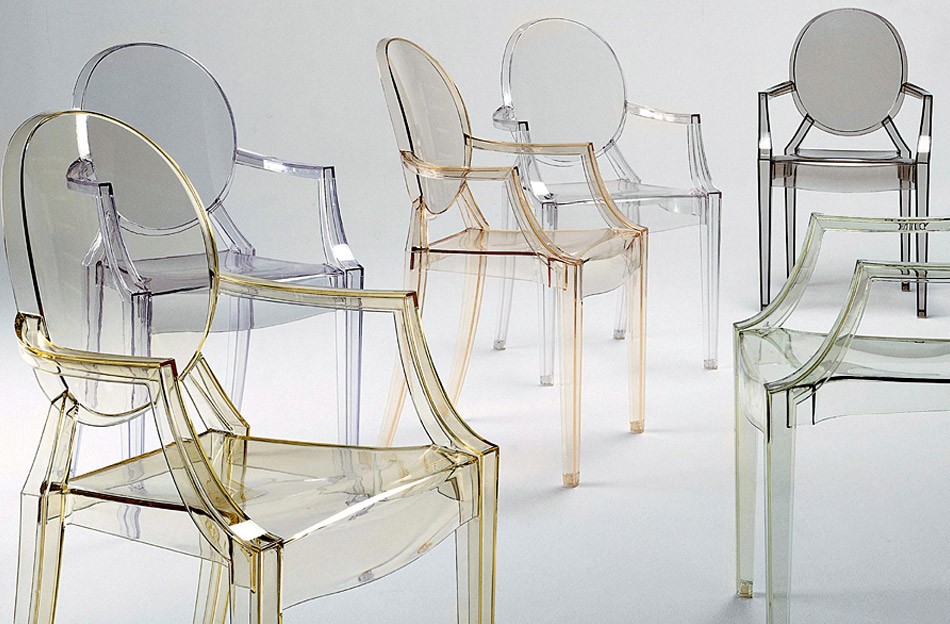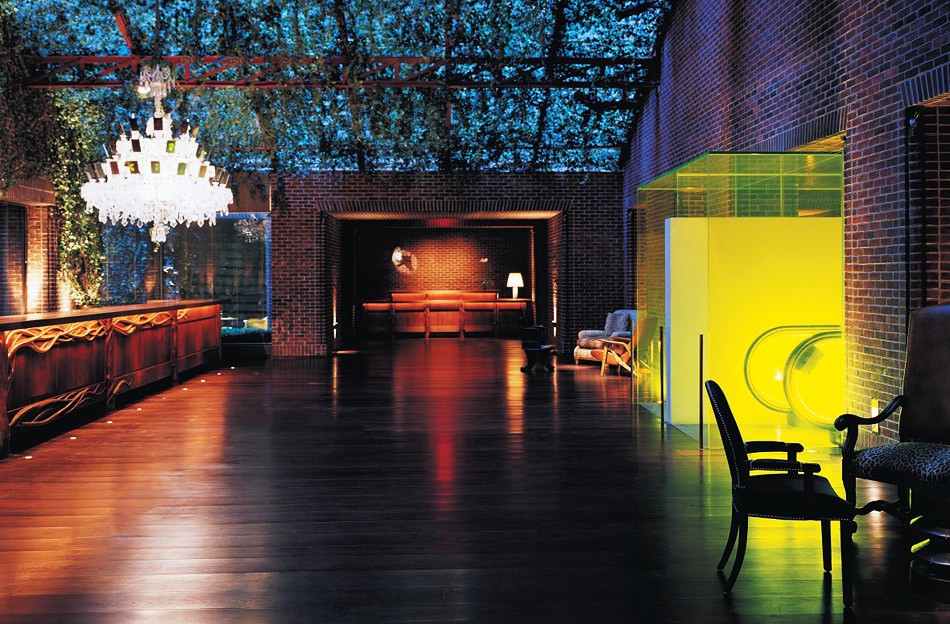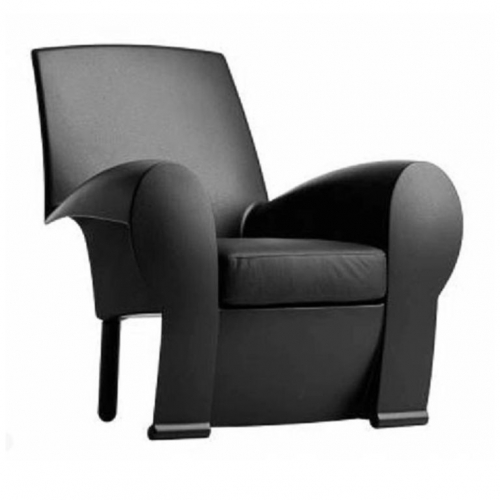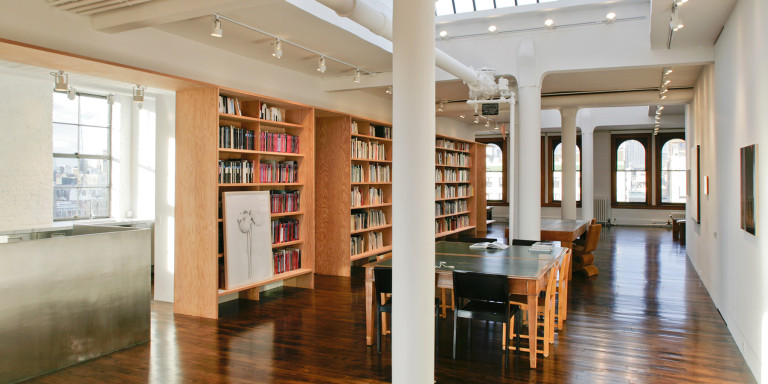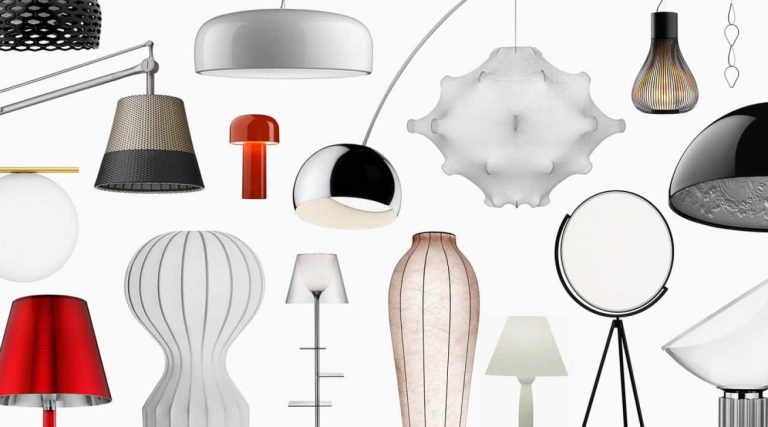
July 2011To call the prolific French designer Philippe Starck a genius is no hyperbole (photo by Jean-Brice Lemal). Top image: The Wine Room of the Starck-designed yoo Nordelta, a residential development in Buenos Aires. All photos courtesy of the designer
There is a paradox to the idea of meeting the legendary Philippe Starck at the Maison & Objet trade show in Paris. Every hall here is the size of an airport terminal, each crammed with product from flooring and furniture to fabrics and fake flowers. There is design aplenty, but you have to walk many miles through vast hangars to find anything innovative, exciting or even just simply good. And herein lies the problem: On the one hand, we live in an age obsessed to its core by design and Starck reigns as a sort of god; on the other, so much of what is on offer is bad design, the type that he himself would describe as cynical. Starck may be the most famous designer on the planet, but philosophically he is at odds with nearly everything that modern design is responsible for, most particularly the unstoppable tsunami of consumer waste. Seeing him at Maison & Objet—where he’d been nominated for Designer of the Year—is rather like running into the Dalai Lama at your local gym: It just doesn’t jibe.
Certainly he has not come here in search of inspiration. I have not seen one thing and I will not see one thing, he says. I am a lonely worker and a lonely dreamer, and I do not know what other people do. Design is not fashion; it is not to do with trends. Design is about creativity, honesty, ecology, technology and also subversion. Starck is a mesmerizing speaker. His English is fast and enthusiastic, not always perfect, but infused with the same humor that can be found in much of his work. He can talk at length, with passion, wit and a sense of poetry about the subjects closest to his heart. If you need proof of this yourself, just check out his TED Talks—beginning with the 18 minutes he delivers (with no props or PowerPoint) on “Why Design?” How can you not love a man this successful and famous who states he is embarrassed to be doing a job that is absolutely useless?

Starck co-founded the residential property company yoo in 1998; this dramatic hallway is at yoopune, in Pune, India.

A dining room at yoopune shows off a signature Starck scheme. The designer says he established yoo to create homes in which people could be encouraged to lead better lives.
The fact is that Philippe Starck is the designer’s designer the undisputed genius of a particularly egocentric and critical world. Born in Paris in 1949, the son of an aeronautical designer, he was educated at the Ecole Nissim de Camondo, where he studied product design and interior architecture. In 1968, aged just 19, he started his own company producing inflatable objects, which, a year later, led to a job as art director for fashion designer Pierre Cardin. Starck designed furniture for his new boss—notably inflatable space age-y pieces—that reflected Cardin’s own futuristic fashion direction. During the 1970s, he briefly moved to the States and then embarked on a career as an interior decorator, with his early interiors including La Main Bleu bar in Montreuil, France, in 1976. However, it was the commission to design the private apartments in the Élysée Palace of President François Mitterrand, in 1982, that catapulted him into the international limelight.
In 1980, he founded Starck Products and in 1985, he co-founded a furniture firm with Gerard Mialet called XO. Since then, some of his product designs—such as the leggy Juicy Salif lemon squeezer (created for Alessi in 1990) and the witty Louis Ghost chair (produced by Kartell in 1991)—have achieved iconic status. But he is equally well known for his interiors, most particularly the highly influential designs commissioned by American hotelier Ian Schrager. For Schrager, Starck created everything from the internal architecture of a property to the linens on its tables, engendering an aesthetic that exploded in boutique design hotels around the globe. Before Starck and Schrager teamed up, top hotels were staid and discreet. Starck’s cool and contemporary designs, in contrast, were highly desirable, sharply hip and peppered with wit. Lobbies had a nightclub atmosphere—Schrager, after all, founded the legendary Studio 54—becoming must-visit destinations for celebrity-spotting and people-watching for anyone who followed gossip pages or wanted to experience the vibe captured on the many fashion shoots commissioned within the hotels’ walls.

The entrance to Starck’s latest Paris project, Le Royal Monceau Raffles Paris hotel, which some are calling his best work to date.
Starck-Schrager partnerships would eventually include the Paramount and the Royalton, in New York; the Delano, in Miami; the Mondrian in L.A.; St. Martins Lane Hotel and the Sanderson, in London; and the Clift in San Francisco—all of them dramatic stage sets against which the beautiful people could play out their beautiful lives. Other Starck landmarks include the Felix restaurant atop the Peninsula Hotel, in Hong Kong; the Teatron, in Mexico; the Asia de Cuba restaurant, in New York, with its then-revolutionary communal table; and, in Paris, both the spectacularly opulent den of Café Costes, within Hotel Costes, and the recently refurbished Le Royal Monceau Raffles Paris hotel, which features a typical quirky Starck touch: a rare-book shop in the front of the lobby. In addition, Starck is the driving design force behind the residential property company yoo, which he founded with John Hitchcox in 1998. For yoo, he took inspiration from a desire to create truly exceptional living spaces—homes in which people could blossom and, he says, be encouraged to lead better lives. To date, he has designed more than 20 yoo projects around the world, including those in Berlin, Istanbul, London, Miami and Tel Aviv.
Like Midas, everything that Starck touches turns to gold—whether it is watches, clothes, luggage, furniture, lamps, bathrooms, motorbikes or packaging for beer. No wonder manufacturers are queuing at his door, keen to input some Starck magic into their own profit margins. He works both on a huge scale (as with a 387-foot Sigma superyacht) and a tiny one (his toothbrush sanitizer for Yonkers won the Industrial Design Excellence Award in 2005). Few other designers have created so much variety of product in such volumes as Starck. But that is not all: No one else has consistently produced such excellence in design. When people talk of Starck as a genius, they are stating a truth, not indulging in hyperbole.
Design is not fashion; it is not to do with trends. Design is about creativity, honesty, ecology, technology and also subversion.
He has made a personal fortune through product design, but now he believes it is time to recalibrate the design compass. He asks: “Are we here to design more product or to be very creative in a different way of conserving energy? Today, we need more thinking, not more chairs. The most important thing is to think about what is really important—what is the goal. Is it to have a new sports car? I have my doubts. Is the goal to make my wife happy? I am sure, yes. For twenty years, I have pursued democratic design, in a bid to raise quality and bring the price of that quality down. Now I intend to concentrate less and less on products and more and more on being a producer of action.”
His latest design challenge revolves around eco-architecture—high-tech houses at very low prices that appeal to his democratic sensibilities. “There is a new priority today that revolves around ecology and society,” he explains. “We have new territories to explore, and we have to do that, even if it means saying goodbye to our easy lives. We are coming to the end of this consuming society. When you lose a model of society that has existed for half a century, you have to think how to create the next one—not repeat what has gone before.”

Starck poses with the Super Naked Xv, Voxan by Starck. Photo by Thomas Duval
His big vision—the ultimate dream—is to found a university of pure creativity, one that will bring together every form of creative expression, from painting and music to fashion and design. “What is this incredible abstraction that makes the difference between us and animals?” he asks. “Nobody has really solved this mystery. But if we could succeed in doing so, it would enable us to find fresh and important applications of creativity. Creativity right now is in fact very low. It is time to shake things up. Society has become too cynical, too venal. But you can’t build a civilization on cynicism and negativity; you build it with dreams, kindness and honesty.”
Starck says he has no idea why he ended up following the path he did, although he offers this possible motivation: “When I was growing up, I lived with my mother, and we were very poor, so we never had any furniture,” he says. “Perhaps that is why I wanted furniture. My father was a great airplane engineer—the Starck AS.70 Jac airplane was the most famous French-built, single-seater light aircraft of the 1940s—and I knew that to make an airplane fly, you had to be creative and to break the rules. So perhaps it is because of this mix of empty rooms and fierce creativity that I have ended up where I am.”
Today, he lives in Paris, New York, London and the Venetian island of Burano. Married to Jasmine Abdellatif, he has three previous wives and four children—including his eldest, Ara, with whom he collaborated on the 2007 refurbishment of Le Meurice hotel in Paris. (For that project, he paid homage to one of the hotel’s most famous regular guests, Salvador Dalí.) Although his name is famous around the world, he wears his fame lightly: “I don’t have a clue about fame. I do not go to dinner parties or cocktail parties, so there is no one to hold up a mirror to me,” he explains. “My wife and I live completely out of everything like that—I walk alone and think alone, because all the exceptional and original people I have met live in silence. When you live in a tribe, you repeat what the tribe does. And the world is not built by people who repeat, but by those who create.”
Such statements notwithstanding, Starck is his own harshest critic. “I am the biggest disappointment of my life,” he says with typical frankness and verve. “I think I am not so smart, not so honest, but then if you are happy with yourself, you are dead. It is this feeling of dissatisfaction that obliges you to wake up each morning in the hope that you will finally do well. You should never be happy with yourself.” In Starck’s view, there is simply no excuse not to harness your intelligence and creativity and look for ways to make society a healthier and happier place. “The big question is: Do you want to be an actor or a spectator?” he says. “The society we currently have has made everyone spectators—consumers with their mouths open who need feeding all the time. I encourage people to be actors of their own lives, of their own cities, of their own societies, of their own civilizations. We need actors, not more spectators.”
Shop Philippe Starck on 1stdibs

